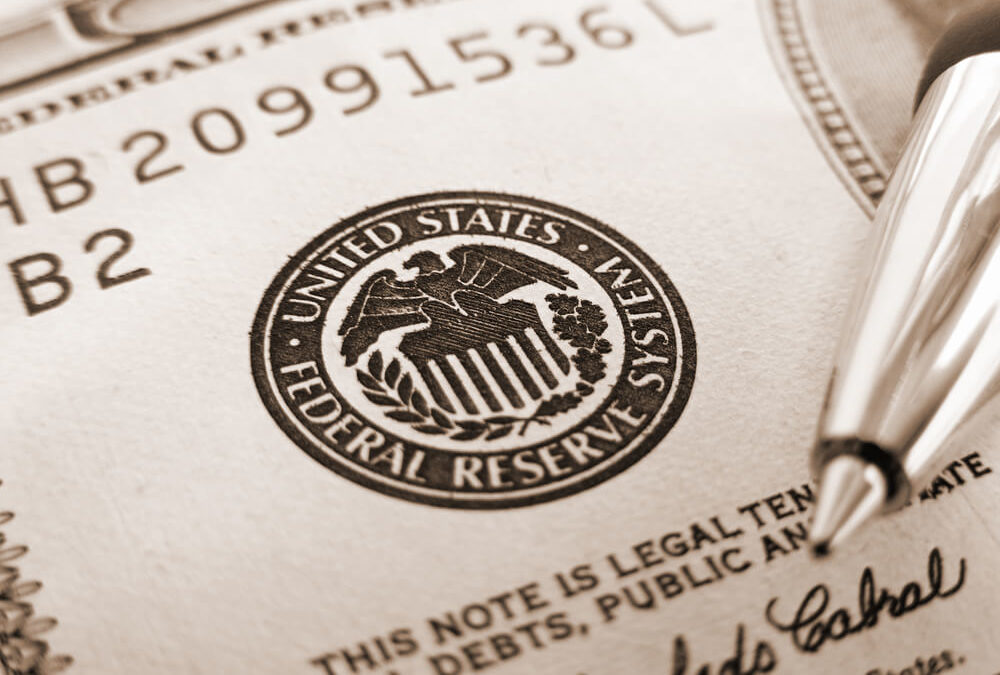It is the controversial main driver in ensuring financial stability, setting interest rates and keeping inflation in check in the United States, but what is the Federal Reserve and how does it work?
In 1913, the U.S. Congress determined the country needed a central bank to help avoid the financial panics that negatively impacted the U.S. economy in the previous century.
Those crises led to bank failures and business bankruptcies across the country.
Since its inception, the Federal Reserve has played an even greater role in shaping the direction of the U.S. economy through monetary policy.
What Is the Federal Reserve?
The Federal Reserve was created with the intention of making sure the U.S. economy is stable, and to regulate financial institutions.
Banks lean on the Federal Reserve to borrow money when there are no other avenues to do so.
It’s an independent sector of the federal government because its decisions do not need ratification by Congress or the president. It is however subject to Congressional oversight and works within government economic and fiscal policy objectives.
According to federalreserve.gov, the Fed (as it is most commonly referred to as) performs five general functions.
They are:
- Conducting the nation’s monetary policy to promote maximum employment, stable prices, and moderate long-term interest rates in the U.S. economy.
- Promoting the stability of the financial system while seeking to minimize and contain systemic risks through active monitoring and engagement in the U.S. and abroad.
- Promoting the safety and soundness of individual financial institutions and monitoring their impact on the financial system as a whole.
- Fostering payment and settlement system safety and efficiency through services to the banking industry and the U.S. government that facilitate U.S.-dollar transactions and payments.
- Promoting consumer protection and community development through consumer-focused supervision and examination, research and analysis of emerging consumer issues and trends, community economic development activities, and the administration of consumer laws and regulations.
The system is comprised of 12 regional banks based in Atlanta, Boston, Chicago, Cleveland, Dallas, Kansas City, Minneapolis, New York, Philadelphia, Richmond, San Francisco and St. Louis.
The Federal Reserve is overseen by the seven-member Board of Governors of the Federal Reserve System. These members are nominated by the president of the United States and confirmed by the Senate for a 14-year term. The chairman and vice-chairman are also nominated by the president and confirmed by the Senate to serve four-year terms.
How the Fed Makes Money
The Fed’s primary source of income is the interest it collects from U.S. government securities it acquires from operations.
It also earns revenue from the interest in foreign currency investments, interest on loans to depository institutions and fees for things like fund transfers and check clearing provided to those depository institutions.
All the money left over, after paying expenses, is transferred to the U.S. Treasury.
How the Fed makes money helps to understand what the Federal Reserve is and how it works.
The Federal Open Market Committee
While the Board of Governors sets the required amount of money banks have to hold in the event of sudden withdrawals, the Federal Open Market Committee sets monetary policy.
The FOMC conducts that policy by adjusting the level of short-term interest rates in response to changes in the overall economic outlook. For example, the recent cut of interest rates to benchmark Treasurys was done at the behest of the FOMC.
The committee also decided to purchase Treasury and mortgage-backed securities to lower longer-term interest rates as a way to improve financial conditions and support economic recovery.
The FOMC is comprised of all seven Board of Governor members, the president of the Federal Reserve Bank of New York and four of the 11 remaining Reserve Bank presidents.
Major Milestones For the Federal Reserve
There have been several instances where the Fed has stepped in with significant policy decisions to help chart the course of economic stability.
Here are five major milestones in the history of the Federal Reserve:
- The 1920-21 recession — The first big test of the Federal Reserve happened just after World War I. Consumer prices were high and gold was moving out of the country at a rapid pace. The Fed increased key interest rates and manipulated the money supply by raising the discount rate.
- The Great Depression — The bubble created by the Roaring ’20s finally burst in October 1929 as the stock market crashed. Instead of lending banks more money, the Fed did the opposite. It raised interest rates, leading to nearly 9,000 banks failing.
- The Federal Reserve-Treasury Accord — In 1942, the Federal Reserve and the U.S. Treasury approved an agreement to keep financing for World War II on the cheap. The problem was the agreement took away some of the Fed’s independence. The result was the Federal Reserve-Treasury Accord in 1951. It eliminated the Fed’s obligation to monetize the Treasury’s debt at a fixed rate.
- High inflation in the 1970s — Through the 1970s, inflation reached 14% as the stock market, unemployment and federal deficit were all in bad shape. The Fed tightened monetary policy and slashed inflation to 3% by 1983. The problem was unemployment rose to close to 10% during the same time the Fed was trimming inflation.
- The Great Recession — After the collapse of the housing market in 2007, the stock market followed suit. During that time, the Fed lowered its benchmark interest rate to near 0% and bought almost $85 million in Treasurys and mortgage-backed securities every month — otherwise known as quantitative easing.
Understanding how the Fed has acted during financial crises in the past is important to knowing what the Federal Reserve is and how it works.
We have outlined several things here.
As you can see, the Federal Reserve plays a critical role in the shape of the U.S. economy. Its policies and decisions are instrumental in helping right the economic ship when times seem down. It can also balance things out when the economy is in good shape.
Of course, none of this comes without controversy, and there are many around the Federal Reserve and how it sets policy. For year, politicians like Ron Paul and economists like Peter Schiff have called for the Fed to be audited and ended.
In 2009, Paul’s “End the Fed” debuted at No. 6 on the New York Times best-sellers list. The book advocates for the Fed to be outright abolished “because it is immoral, unconstitutional, impractical, promotes bad economics, and undermines liberty.”
Schiff said in a recent exclusive interview with Money & Markets he also thinks the bank should be abolished and the U.S. returned to a gold standard.
“A gold standard would have prevented the kind of speculative bubbles that we are currently seeing from forming in the first place,” Schiff said. “It would have prevented the debt creation that is currently sapping the world’s economic vitality.”
There’s a lot that goes into understanding exactly what the Federal Reserve is and how it works, and hopefully now you have a better understanding.
RELATED:
- Fed’s Rate Slash Sinks Dollar. Will the World’s Reserve Currency Recover?
- Fed’s $2T Stimulus Plan Fails to Stop Market Crash
- Fed Cuts Interest Rates 0.5% to Combat Coronavirus Correction
- Goldman Projects 3 Rate Cuts by June; Fed’s Bullard Isn’t so Sure
- Markets Betting Fed Cuts Rates Sooner Than Planned





